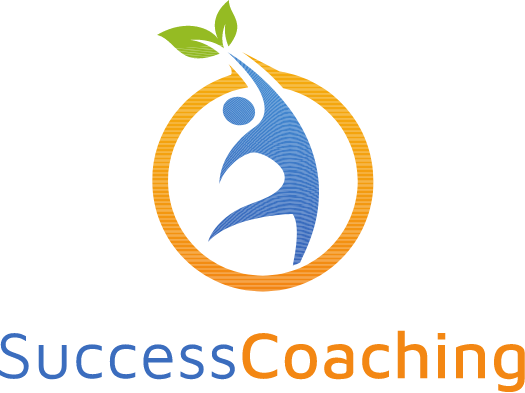
Navigating a job transition can be challenging, especially after being laid off. It’s easy to experience feelings of shock, grief, sadness, overwhelm, confusion, despair, and anger. While it’s important to validate your feelings and allow yourself time to grieve, it’s also important to not allow negative emotions to take over, preventing you from moving forward.
Here are some steps to help you successfully navigate a job transition:
1. Focus on the Gift and Opportunity in the Situation:
This may seem impossible to do. Start small. You now have the time to focus on developing healthy habits that you’ve been putting off, such as walking in the morning, meal planning and trying new recipes, getting more rest, and spending quality time with family.
2. Assess Your Situation:
Take time to reflect on your career goals. Take a piece of paper and draw 3 columns. In the far left column, list your core values, those things that are most important to you in life. Popular core values include, family, faith, and finances. Core values can also include character traits such as honesty, integrity, and intentionality.
In the middle column list your passions. What are those things that light a fire in your belly, making you feel energized and excited?
In the right column list your strengths. These include your born talents and skills you’ve developed throughout your career.
Start with a quick brain dump, then, step away, allowing yourself time to reflect. Revisit your lists when you think of something else. Jot down as many things you can think of.
When you feel comfortable with your lists, circle the similarities in each column. This will give you a good starting point for job exploration.
3. Update Your Resume and LinkedIn Profile:
Include your most recent experience, achievements, and skills. A common mistake is focusing only on your skills. Employers want to know how you’ve used your experience and skills to increase bottom line and create a positive impact in the organization. How much revenue did you generate? What new initiatives did you implement and what was the impact? How did you grow and develop your team, and what was the impact to the organization?
Your LinkedIn Profile should provide a more detailed account of your experience, achievements, and skills.
Both your resume and LinkedIn profile must include key words that match the job descriptions of the positions you are applying for. The more key word matches you have, the greater the chance you will move past the initial screening process.
ChatGPT is a great resource for generating content ideas using key words. Keep in mind that AI is an excellent tool to get you started. It should never be used to replace your voice. It’s also important to fact check AI generated information for accuracy.
4. Network:
Reach out to your professional contacts, former colleagues, mentors, and friends in your industry to ask for referrals, recommendations, and insights into potential job opportunities.
Join and engage in LinkedIn and other social media groups with like-minded professionals in similar industries or industries you wish to transition to. Attend in person and virtual networking groups and mixers. Provide a one-sheet of your experience and what you are looking for. Include your contact information, website, and social handles. Ask for specific introductions, including the title of the person you wish to meet, the company, and the industry. The more specific you are, the easier it is for others to provide referrals. Canva.com is a great resource for one-page business templates.
5. Skill Enhancement:
Use your downtime to learn new skills or enhance existing ones through online courses, certifications, and workshops. This can be very helpful when transitioning to a new field.
6. Job Search Strategy:
Develop a targeted job search strategy. Look for job postings on job boards, company websites, and professional networking platforms.
Taylor resume and cover letters to each job you apply for, focusing on keywords. Showcase how your skills align with the specific requirements of the role. Provide examples of how you’ve used those skills to create specific results.
7. Practice Interviewing:
Brush up on your interviewing skills by practicing answering common interview questions:
Why do you want to work for our organization?
Why should we hire you?
What do you hope to learn by working for our organization?
Describe your leadership style.
Describe a challenge you overcame.
What are your greatest strengths?
What are your growth opportunities?
8. Stay Organized:
Keep a spreadsheet of the jobs you’ve applied for, the companies you’ve contacted, and scheduled interviews. Include follow-up dates and thank you notes sent.
9. Personal Branding:
Develop a personal brand that highlights your unique skills and strengths. If you don’t have a website, invest in one or create a landing page. Create business cards that include contact information, website/landing page, social links, and QR code to relevant content: podcast interviews, videos, blog posts, articles, books, etc.
10. Be Open to Opportunities:
You may have a specific role in mind. If unexpected opportunities arise that align with your values, passions, and strengths, they might be worth considering, as they could lead to rewarding career paths.
11. Practice Patience:
This can be challenging, especially when job loss creates a significant financial hardship. Transitioning to a new job takes time. You will receive rejections. It’s a part of the process and not a reflection of who you are as a person.
Don’t settle for the first thing that comes along. You may end up worse off than your previous position. No amount of money is worth your mental and physical health and wellbeing.
12. Prepare for Negotiations:
If you are actively interviewing, you will eventually receive job offers. Prepare to negotiate. If transitioning to a new industry, many employers will start with a low offer. Research salary ranges for the position in your location and industry so you can advocate for fair compensation. Ask for the high. If you don’t ask for it, you’ll never receive it. Determine what you’ll settle for. If the employer will not meet your salary demands, ask for paid vacation compensation.
13. Maintain a Routine:
Looking for a job is a full time job. Stick to a daily routine, as if you were going into an office. Time block job searching, networking, skill development, and self-care.
14. Stay Informed:
Keep up to date with industry trends, news, and developments. This information can be valuable during interviews and conversations with potential employers.
15. Seek Support:
Job transitions are challenging. Significant effort, motivation, and research is needed to find a new job. You may feel as if you’re on an emotional roller coaster. One day you’ll feel accomplished, productive, and encouraged. The next day you may feel defeated, frustrated, and unmotivated. Finding the right support is imperative.
Find an accountability partner that is supportive and will challenge you. Reach out to a mentor, colleague, friend, coach, or counselor. The right person will keep you focused and motivated when you feel frustrated and discouraged.
Job transitions are challenging but can lead to unexpected, amazing opportunities that can change your life for the better. It often takes a redirection to find the path you were meant to travel.








